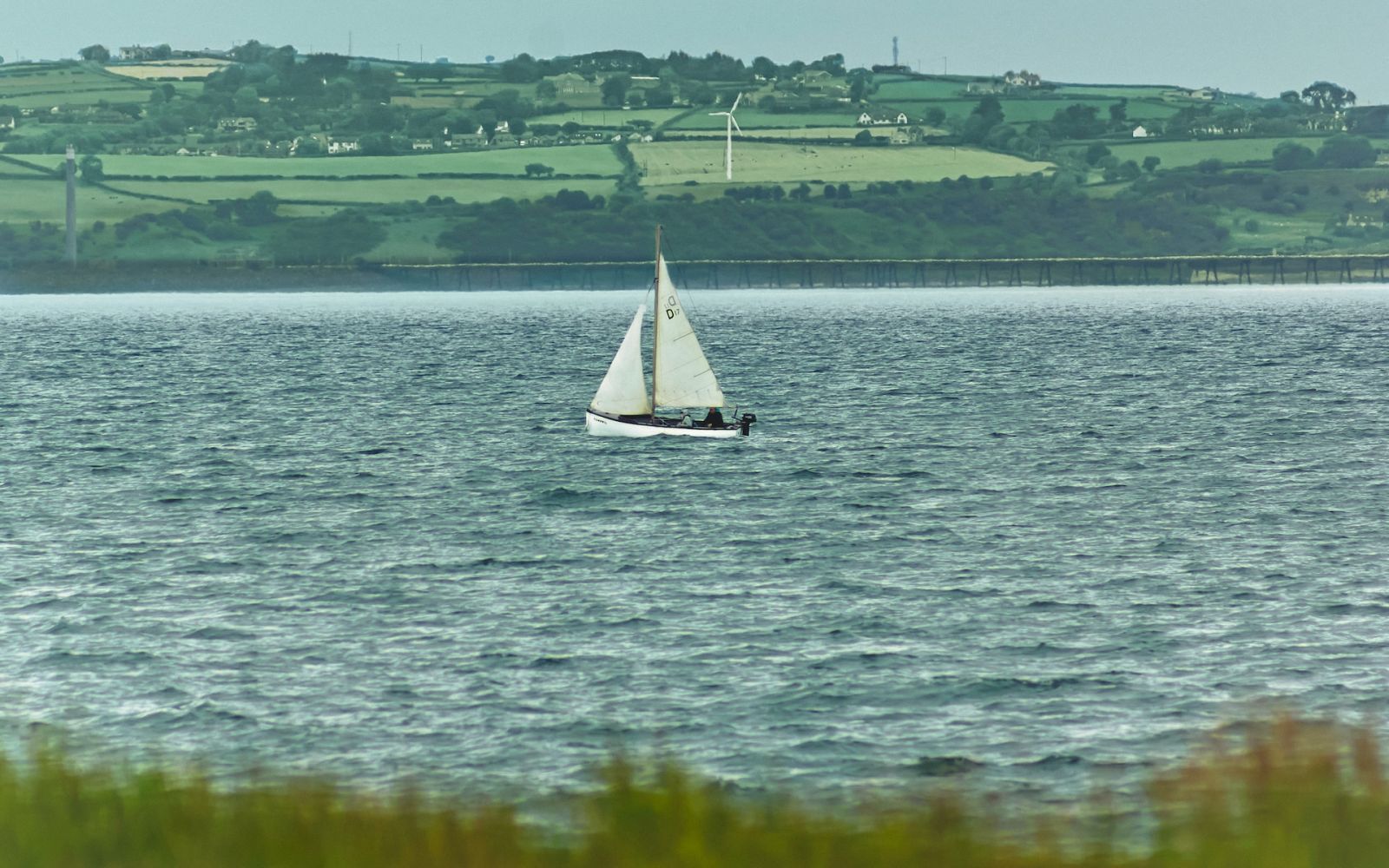How Long Does It Take to Sail to the Caribbean? (UK, NYC)
Sailing times to the Caribbean from different starting points may vary based on your boat's performance, the weather, and the route you choose to take. The Caribbean is a popular offshore sailing destination, offering stable weather conditions during the beginning and end of summer. In this article, we'll cover the estimated sailing times from the United Kingdom, New York City, and the Canary Islands.
From the UK, expect the trip to take roughly 16 to 21 days to reach the Caribbean. If you're beginning your journey in New York City, the trip duration will be roughly the same. Sailing from the Canary Islands, the trip will take approximately 21 to 29 days to reach the Caribbean.
To fully experience the Caribbean and its numerous islands, plan to spend at least a month sailing and exploring the region. This gives you enough time to anchor and enjoy the wonders that make the Caribbean an unparalleled sailing destination.
Summary
- From the United Kingdom, sailing to the Caribbean involves crossing the Atlantic Ocean, which generally starts by heading to the Canary Islands before setting off towards the Caribbean islands.
- The Canary Islands serve as ideal stepping stones for the ocean crossing and offer a great chance to adequately prepare for the transatlantic journey.
- When sailing from New York City, you might consider stopping in Bermuda before continuing towards the Caribbean.
- Make sure you take the weather conditions into account for your safety and pleasure.

On this page:
Sailing from the UK to the Caribbean
| Route | Distance in Nautical Miles (NM) | Estimated Time |
|---|---|---|
| UK to Portugal | 860 NM | 5–8 days |
| Portugal to the Canary Islands | 750 NM | 5–7 days |
| Canary Islands to Cape Verde | 850 NM | 5–8 days |
| Cape Verde to the Caribbean | 2,100 NM | 12–18 days |
When sailing from the UK to the Caribbean, your adventure begins as you travel south along the European coast to make a pitstop in Portugal. From there, you'll head toward the Canary Islands, offshore from the Western Sahara. The next leg of your journey will take you to Cape Verde, offshore from Dakar, before ultimately setting sail directly to Windward Island in the Caribbean.
The time needed to sail from the UK to the Caribbean will heavily depend on your vessel, crew, weather conditions, and sailing experience. Your journey may be influenced by the presence of hurricanes, which typically occur between June and November. Always stay informed about weather conditions and make adjustments to your plans accordingly.

Sailing from New York City to the Caribbean
| Route | Distance in Nautical Miles (NM) | Estimated Time |
|---|---|---|
| New York City to Puerto Rico | 1,555 NM | 7–10 days |
| New York City to Saint Martin | 1,374 NM | 10–14 days |
When sailing from New York City to the Caribbean, you'll likely follow a general route south along the U.S. East Coast, passing through the Florida Straits, before turning eastward towards your desired Caribbean destination. The specific route depends on factors such as weather conditions and your planned stops along the way. Your exact distance will vary depending on which Caribbean island you're aiming for.
The time it takes to sail from New York City to the Caribbean depends on various factors, such as your boat speed, weather conditions, and chosen route. Assuming an average speed of 5 to 7 knots, the journey could take approximately 7 to 14 days. However, unpredictable factors, such as adverse weather, might lengthen your sailing time.
Another important factor to take into account is the Gulf Stream, a strong ocean current that flows north along the eastern U.S. coastline. Using the Gulf Stream to your advantage can greatly expedite your journey. On the other hand, sailing against the current could significantly slow you down.
Sailing from the Canary Islands to the Caribbean
| Route | Distance in Nautical Miles (NM) | Estimated Time |
|---|---|---|
| Canary Islands and Cape Verde | 800 NM | 3–5 days |
| Cape Verde and the Caribbean | 2,500 to 3,500 NM | 14–21 days |
| Canary Islands to Windward Islands | 3,500 NM | 20–25 days |
When sailing from the Canary Islands to the Caribbean, you will most likely depart from the Canary Islands, located off the coast of Western Sahara. Your next stop could be Cape Verde, which lies off the coast of Dakar, or you might sail directly to the Windward Islands in the Caribbean. The distance between the Canary Islands and the Caribbean is approximately 2,900 nautical miles (5,370 kilometers).
The estimated time for sailing from the Canary Islands to the Caribbean varies, but on average it takes about 3–4 weeks. If you're lucky with the weather conditions and your sailboat is fast, you could potentially make the journey in around two weeks. However, it's important to remember that sailing across the Atlantic can be unpredictable, and unfavorable winds might extend your journey up to a month.
Factors Affecting Sailing Time to the Caribbean

Favorable winds can speed up your trip, while calms or headwinds can slow you down
When planning your journey to the Caribbean, be aware of the hurricane season, which typically runs from June to November. You should also pay close attention to the prevailing winds and currents to ensure a smoother passage. Additionally, monitoring the local weather forecasts before sailing, staying flexible with your route, and making adjustments as needed can help you avoid adverse conditions.
The speed and performance of your sailboat will directly impact how quickly you make the crossing
Boats with better sailing capabilities can reduce travel time considerably. For instance, modern cruiser-racers typically make faster crossings than traditional cruising yachts. The sailboat's size and design also contribute to its speed, with larger boats generally allowing faster travel.
On average, a well-equipped sailboat can travel at speeds between 5 and 10 knots per hour (kts/h). Keep in mind, however, that external factors such as wind, waves, and currents can greatly impact boat speed. It's important to familiarize yourself with your vessel's capabilities and adapt your expectations accordingly.
Sailor and crew with experience sailing across the Atlantic will naturally cope better
A more experienced crew can navigate difficult weather conditions, optimize boat performance, and handle potential emergencies more effectively. If you and your crew are inexperienced sailors, it's wise to consider participating in sailing courses and gaining experience through shorter trips before embarking on a long journey like sailing to the Caribbean.
Involve your crew when planning the passage by discussing preferred watch schedules and responsibilities, ensuring that everyone stays well-rested and remains efficient during the journey.
Safety Tips and Preparations for a Smooth Sailing Experience
Prioritize safety and ensure your vessel is in top condition. Start by getting everything ship-shape. Have a regular boat service, and check fluid levels (including fuel) and replenish boat supplies as needed.

While at sea, stay updated on regional security information. For instance, the Caribbean Safety and Security Net (CSSN) publishes reports made by yachtsmen about incidents in the Caribbean. This will help you stay informed and avoid potential trouble spots.
It's also vital to perform a complete pre-sail checklist. Pay special attention to engine warning lights and alarms, ensuring they are in working order. This will enable you to promptly address any issues that may arise with your sailboat's engine during the voyage.
Monitor weather conditions constantly when you're sailing. Grounding and weather are significant concerns for sailors. Sailboats generally have deeper drafts, so it's essential to stay vigilant to avoid running aground. Keep an eye out for incoming storms and adjust your course as needed to stay safe.
Make the most of your sailing experience by actively participating in various tasks on board. While it's not a safety tip per se, it can enhance your understanding of how the vessel operates. You can help hoist the sails, steer the ship, and even climb the mast to stow the top sails. This hands-on approach will give you a well-rounded perspective, making your journey safer and more enjoyable.
Did you find the answer to your specific question?
👍 1 👎 0




Leave a comment